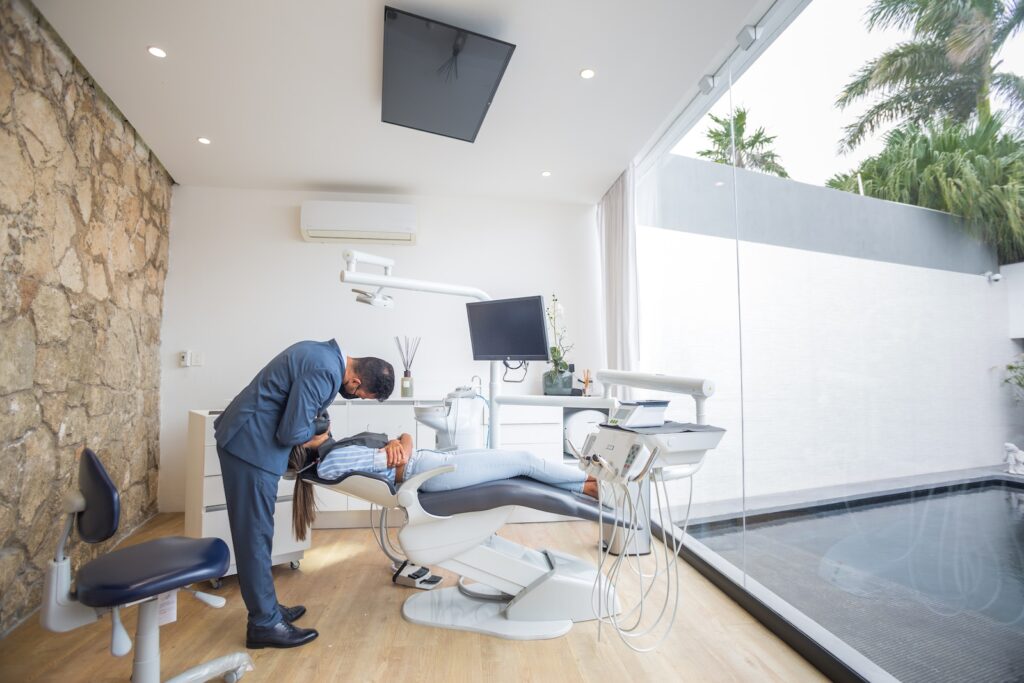For many, a visit to the dentist can bring about feelings of unease and anxiety. Whether it’s the fear of pain or the uncertainty of the procedure, dental phobias are not uncommon. However, did you know that environmental factors like colors, sounds, and scents can play a significant role in soothing these anxieties? It’s fascinating how much the ambiance of a space can affect our emotions and perceptions. Even subtle elements, like the flooring options in a dental office, can contribute to how relaxed or anxious we feel. Let’s delve into the psychology of these sensory elements and discover how they can be used to create a more comfortable dental experience.
1. Colors that Calm the Mind
It’s well documented in psychological studies that colors can influence our emotions and behaviors. Here’s a look at some colors that can alleviate dental stress:
Blue
Often associated with the sky and the sea, blue exudes calmness and tranquility. Light shades of blue can help lower blood pressure, slow heart rate, and reduce feelings of anxiety.
Green
This color represents nature, growth, and renewal. It’s often used in hospitals and clinics because of its soothing and healing properties.
Lavender
This pastel shade is not just beautiful but also is known to reduce stress and anxiety, which can be particularly beneficial in a dental setting.
2. Sounds that Soothe the Soul
Ambient sounds can go a long way in establishing a peaceful atmosphere:
Soft, Instrumental Music
Gentle tunes without lyrics can distract the mind from dental procedures, making the experience more bearable.
Nature Sounds
The sounds of flowing water, chirping birds, or rustling leaves can transport patients to a serene environment, far from the dental chair.
White Noise
This neutral sound can drown out potentially anxiety-inducing noises like the drill or suction device.
3. Scents that Settle the Spirit
Aromatherapy has been used for centuries to treat a myriad of ailments, including anxiety. In a dental setting, the following fragrances can prove beneficial:
Lavender
Not just a calming color, the scent of lavender can decrease cortisol levels, which are associated with stress.
Citrus
Light citrus scents, like that of lemon or orange, can uplift the mood and provide an energy boost, making the dental visit feel less daunting.
Vanilla
This familiar and comforting aroma can evoke feelings of warmth and nostalgia, making one feel at home even in a dental office.
Incorporating Sensory Experiences in Dental Offices
Given the profound influence of sensory stimuli on our emotions, it’s surprising how often they are overlooked in professional settings, including dental offices. Integrating calming colors, sounds, and scents can be a game-changer, turning a typically anxiety-inducing visit into a relaxing and therapeutic experience.
For instance, walls can be painted in shades of calming blue or green, complemented by artworks of serene landscapes. Waiting areas can play soft, instrumental music or nature sounds, offering patients a distraction as they prepare for their appointment. The inclusion of diffusers with soothing essential oils in treatment rooms can further reduce the stress levels of patients.
Moreover, the design and materials of the space also matter. From comfortable seating to selecting the right flooring options, every aspect of the environment contributes to the patient’s overall comfort.

In conclusion, while dental procedures might never be entirely free of discomfort or fear, creating an ambiance that resonates with calmness can significantly reduce the levels of anxiety experienced by patients. By paying attention to the colors on the walls, the sounds in the background, and the scents in the air, dental professionals can offer their patients not just a service but a holistic experience. After all, a relaxed patient is more likely to engage in regular dental visits and maintain better oral health.